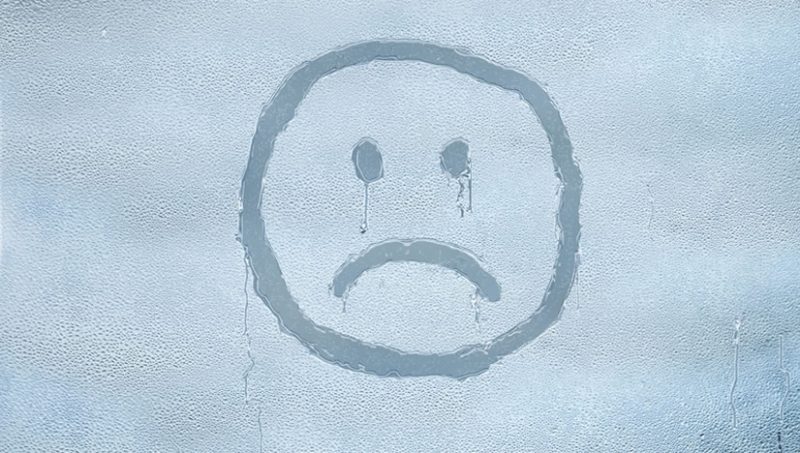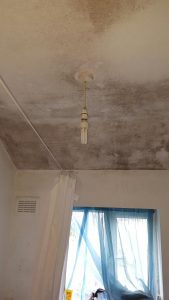Condensation

How To Stop Condensation
Condensation is not just a nuisance, if ignored it can cause serious problems to the occupants, the furnishings, the decoration and the very structure of a building. Condensation on windows often results in accelerated decay to the lower parts of window frames, condensation on walls and ceilings causes mould and damage to to the plaster, condensation on the undersides of roof surfaces can cause rot and decay in the loft. Damp houses cost more to heat and spores from mould can result in health problems. How to stop condensation is an important question.
Condensation In Buildings
Condensation in buildings comes from water vapour in the air cooling and precipitating into water in cooler areas of the building or on cold surfaces such as windows.
All occupied building will contain water vapour, it comes from our cooking, bathing and breathing. So condensation is common cause of damp problems.
Buildings with poorly insulated walls and poor ventilation are particularly prone to this problem. It often causes damage in a building similar to penetrating or rising damp and it often appears in the same places. Condensation is the largest cause of mould in properties.
Condensation Solutions
How to stop condensation. Condensation is often part of a complex damp house problem and may be the result of several factors. Condensation at the base of external walls is often confused with rising damp and costly damp proofing will not resolve this problem. The first step is to get expert advice and properly understand cause and extent of the damp problem, and to help with this we offer a no-obligation damp survey. One of our qualified surveyors who has many years experience in recognising and treating damp problems will visit your home or property and provide an independent assessment of the damp problem. We assess the overall damp problem and propose a guaranteed solution together with a no-obligation quotation for undertaking the works.
Our products can be found by clicking the following link: Dry Air ventilation system.
Condensation – Your Questions Answered
Do new properties suffer from condensation?
Houses are becoming more airtight as we try to make our homes more energy efficient. Without a good source of fresh air in your home, condensation and mould problems start to arise which can cause problems to your health and home.
Is black mould bad for your health?
Apart from being unsightly and ruining your decor, there is a growing band of evidence to suggest that it is also bad for your health. It can cause headaches, breathing difficulties as well as nausea and fatigue. What’s more, mould is a recognised allergen and irritant, it has also been identified as a trigger for respiratory problems such as Asthma.
Is mould harmful?
Mould usually destroys whatever it grows on as it gradually digests it. Mould also releases tiny spores that can travel through the air; these spores often have mycotoxins and allergens attached to them. It is the mycotoxins and allergens that can affect our health and cause allergic reactions.
What causes mould?
The usual suspect for the cause of mould within your home is prolonged condensation. Continuous condensation problems are usually accompanied by black mould, an unsightly fungus which rears its ugly head around window frames, on walls, doors, ceilings, furniture and it can even appear on your clothes hanging inside a wardrobe or closet. A home suffering from poor ventilation will be vulnerable to both condensation and mould problems.
Common Condensation Myths
 Condensation doesn’t damage internal decoration, FALSE. Humid air condensing on cold walls and ceilings can cause paint to bubble and peel, plaster to become perished and de-laminated from walls and wallpaper to peel and timber to rot.
Condensation doesn’t damage internal decoration, FALSE. Humid air condensing on cold walls and ceilings can cause paint to bubble and peel, plaster to become perished and de-laminated from walls and wallpaper to peel and timber to rot.
Mould caused by condensation does not cause health issues, FALSE. Infants may develop respiratory symptoms as a result of exposure to a specific type of fungal mold, called Penicillium. Signs that an infant may have mould-related respiratory problems include (but are not limited to) a persistent cough and/or wheeze. Mould exposures have a variety of health effects depending on the person. Some people are more sensitive to mould than others. Exposure to mould can cause a number of health issues such as; throat irritation, nasal stuffiness, eye irritation, cough and wheezing, as well as skin irritation in some cases.
Damp air and walls costs more to heat than dry air and walls, TRUE.
Condensation is not a cause of wet or dry rot, FALSE.
Condensation can be cured by opening windows, FALSE.
There is no way of preventing condensation from occurring, FALSE. Our whole house ventilation system uses the Positive Input Ventilation principle. This introduces fresh, filtered air into the home at a continuous rate, encouraging movement of air from inside to outside
Condensation does not cause damage to your property, FALSE. The unwanted moisture enables the growth of various fungi in wood, causing rot or may eventually lead to sick building syndrome. Plaster and paint deteriorate and wallpaper loosens. Walls get stained, from the water and mold.
Areas we cover
We have regional teams in the following areas.
We aim to provide a solution to your problems in Cheshire, Manchester & Lancashire, Liverpool & Merseyside, Leeds & North Yorkshire, Sheffield & South Yorkshire, Stoke-on-trent and surrounding areas. We offer a No-Obligation Damp Survey in these areas.
Book Your Condensation Survey Now
We offer a FREE* no-obligation survey/report on your property (*subject to terms and conditions).
To get expert advice on your how to stop condensation in your building book a no-obligation survey – just fill in the form on the top right of this page and we’ll contact you to arrange an appointment. (A fee will apply)
If you would like to speak to a Damp 2 Dry Solutions expert, call 01606 872691.
Read testimonials from customers that recently benefited from our services.




